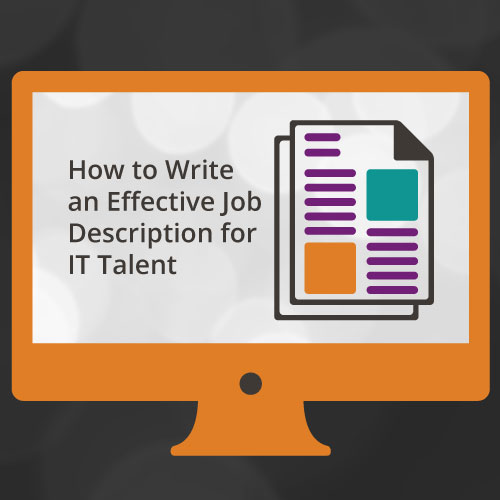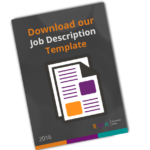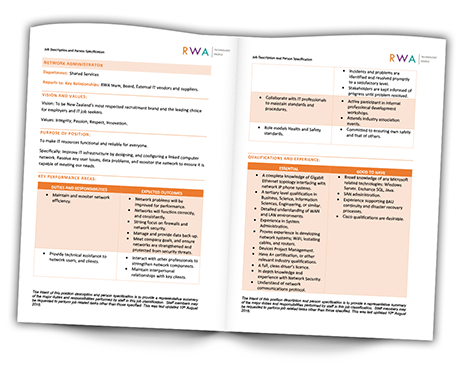When you find great IT talent, it makes a big difference when you can move quickly through the recruitment process to keep their attention. So how do you know if you’re selecting the right person for the job? How do you communicate the expectations in a way that will help, and not detract from your candidate experience? The first step is to build a clear, well-presented job description that gives potential applicants a thorough overview of the skills and attributes needed for the role.

Sometimes it’s hard to know where to start with a job description. Read on for a few informative tips on how to put together the right job description for your role. To save you the time and hassle, we’ve also included a job description example and a template for you to download.
What’s in a Standard Job Description?
Typically, you will have noticed that a job description is a written document including a list of tasks and responsibilities. Each item on the list has an important part to play in the overall design and message of the job description. It will inform an employee of what the role involves, why the role exists, and what the role is to accomplish. Along with this, there are three key sections that contribute to the overall structure of a job description; duties, tasks, and responsibilities. Including all of these things lets a potential employee know what is expected of them, and also reflects what you are looking for.
The length of your description may differ depending on the size of the organisation and the available resources. To keep your job description relevant avoid producing a recycled version of the role’s previous job description. Instead, think of how the role has changed since the last person was hired. Positive employer and employee relations start with a good recruitment process and clear communication, so the job description is an important part to get right.
Layout of a Job Description
You can adjust how you present and write your job description based on preference, but there are a few general tips that can help you overall. Firstly, make your job description easy to read. To recruit top IT talent, the layout must be clear, enticing and specific. Use bullet points, headings, white space and a structured layout. Using industry jargon is acceptable within a job description, as IT professionals should already be familiar with the relevant terms.
Choose a Job Title Carefully
A job title is important for all professionals; even more so in the IT sector as it contains such a broad spectrum of roles. Your management team should carefully evaluate and ensure the title reflects the position, role, and duties. Often, a title can be inflated by representing seniority, instead of focusing on what an employee will do in their job. For example, the difference should be clear if the job holder will manage a team, or only be involved with functions like development, data issues, and software system support. Although it is not the main focus, these job titles are also indicators of what an expected salary may be. Candidates may search similar titles on job boards or salary surveys to compare findings.
Write in a Reflective Tone
Your employment brand is the most important thing in attracting employees, so write in a tone that reflects your company and highlights its culture. You can determine your company culture by asking your current employees. A company’s culture involves the beliefs, attitudes and values that are shared by employees, which also impacts how they work on a daily basis. A job description usually uses third person and conveys a professional tone that displays your company’s culture. The language you use in your job description should be appropriate for the type of individual you are looking for in terms of their level of expertise, and position.
Employment Criteria
Listing the responsibilities of the role is important for a job description; it informs a candidate of the company’s expectations and has legal implications, so it’s essential to get it right. Include qualifications, skills, and personal characteristics. Ask yourself: “is a qualification necessary for the job or is someone qualified for the role through their experience?” and “what technology or programmes will the candidate be using, and will the candidate need to have those skills or can they be taught?”
Summary
A well thought-out job description will reflect your company, and be a strong tool for attracting IT talent. When you’re writing a job description, try to keep those typos at bay, and ensure you are representing the role accurately.
If you are still having trouble defining your job requirements, feel free to get in touch with our specialist team here at RWA. We’re technology people and are well placed to guide you through this process. Don’t forget to download our template and example below.




